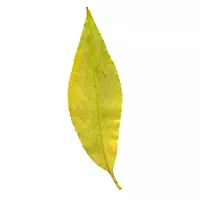Willow leaves

The willow or willow tree belongs to the genus of plants of the same name. Willow trees are widespread in the Russian Federation. It is worth noting that willows choose various territories and conditions for growth. The vast majority of plant species choose the banks of rivers or lakes for growth, or dry sandy places on the slopes. The appearance of willow depends primarily on the variety of plant.
It is worth noting that willows are quite tall trees and shrubs at the same time. We think not many people know about the distinctive medicinal properties of willow leaves, which our ancestors used from time immemorial to treat and prevent some types of diseases. It is noteworthy that the willow among the Slavs was considered a symbol of the hearth and the house. In addition, amulets and charms were made from bark and leaves of wood to drive away evil spirits.
Most often, bark and willow leaves are used for medicinal purposes. The beneficial properties of willow leaves are due to the vitamin-mineral composition of the plant. Willow leaves contain a record amount of vitamin C. In addition, the chemical composition of willow leaves is enriched with calcium, iron, as well as phosphorus and vitamin of the PP group.
All of the above compounds refer to biologically active substances that are certainly useful for the human body. It is worth noting that depending on the type of tree, willow leaves can differ not only in appearance, but also in chemical composition. However, the unique properties of willow leaves can still be used for therapeutic and preventive purposes.
The useful properties of willow leaves are actively used in pharmacology, as well as folk medicine. In addition, young willow leaves are used as an ingredient in the process of making vitamin salads from fresh greens. The leaves of some willow species contain a significant amount of tannins in their chemical composition, as well as flavonids and salidroside. Naturally occurring compounds such as flavonides are valued for their unique antiviral properties.
Most often, Willd Willd willow leaves are used for medicinal purposes. As a rule, decoctions and infusions are made on the basis of willow leaves. Willow leaves are used both fresh and dried. Extracts obtained from willow leaves are included in the compositions of antipyretic, anti-inflammatory, and in addition antibacterial medicines.
Willow leaves have a general strengthening effect on the human body. Pouring willows is recommended to be used as a natural medicine that contributes to maintaining the immune system of the human body. In addition, willow leaves help in the treatment and prevention of diseases of the gastrointestinal tract.
Often, the plant is used as an effective sedative and anti-parachuting agent. The range of possibilities for using willow leaves is quite large. However, you should not start prophylaxis or treatment with the leaves of the plant without first consulting a doctor.
willow leaves 122 kCal
Energy value of willow leaves (Ratio of proteins, fats, carbohydrates - ju):
Proteins: 6.1 g (~ 24 kCal)
Fats: 1.6 g (~ 14 kCal)
Carbohydrates: 20.7 g (~ 83 kCal)
Energy ratio (bj | y): 20% | 12% | 68%
 Español
Español Français
Français Português
Português Русский
Русский 简体中文
简体中文 繁體中文
繁體中文 日本語
日本語 한국어
한국어 العربية
العربية Türkçe
Türkçe Қазақ
Қазақ Deutsch
Deutsch Italiano
Italiano Українська
Українська
